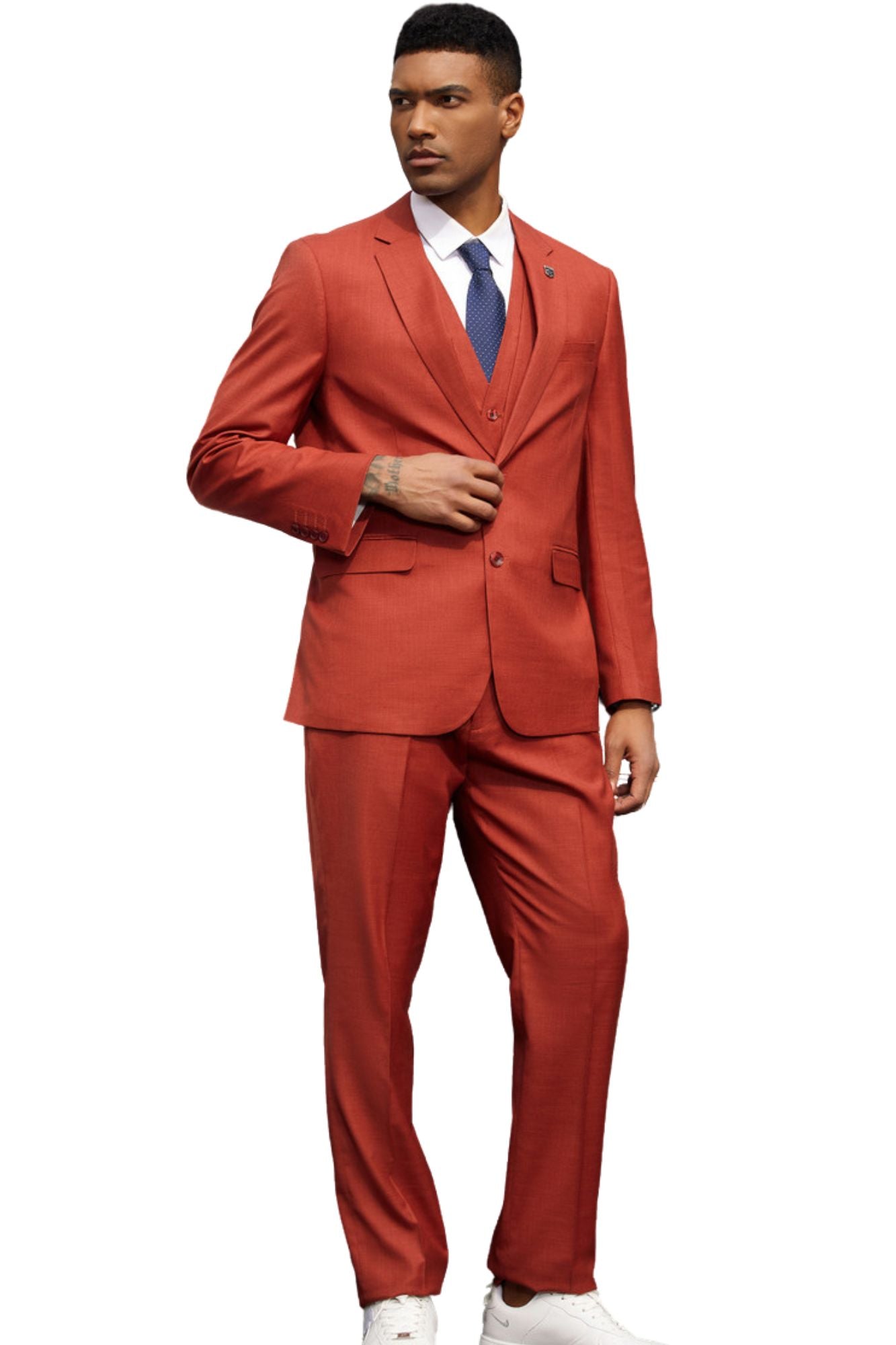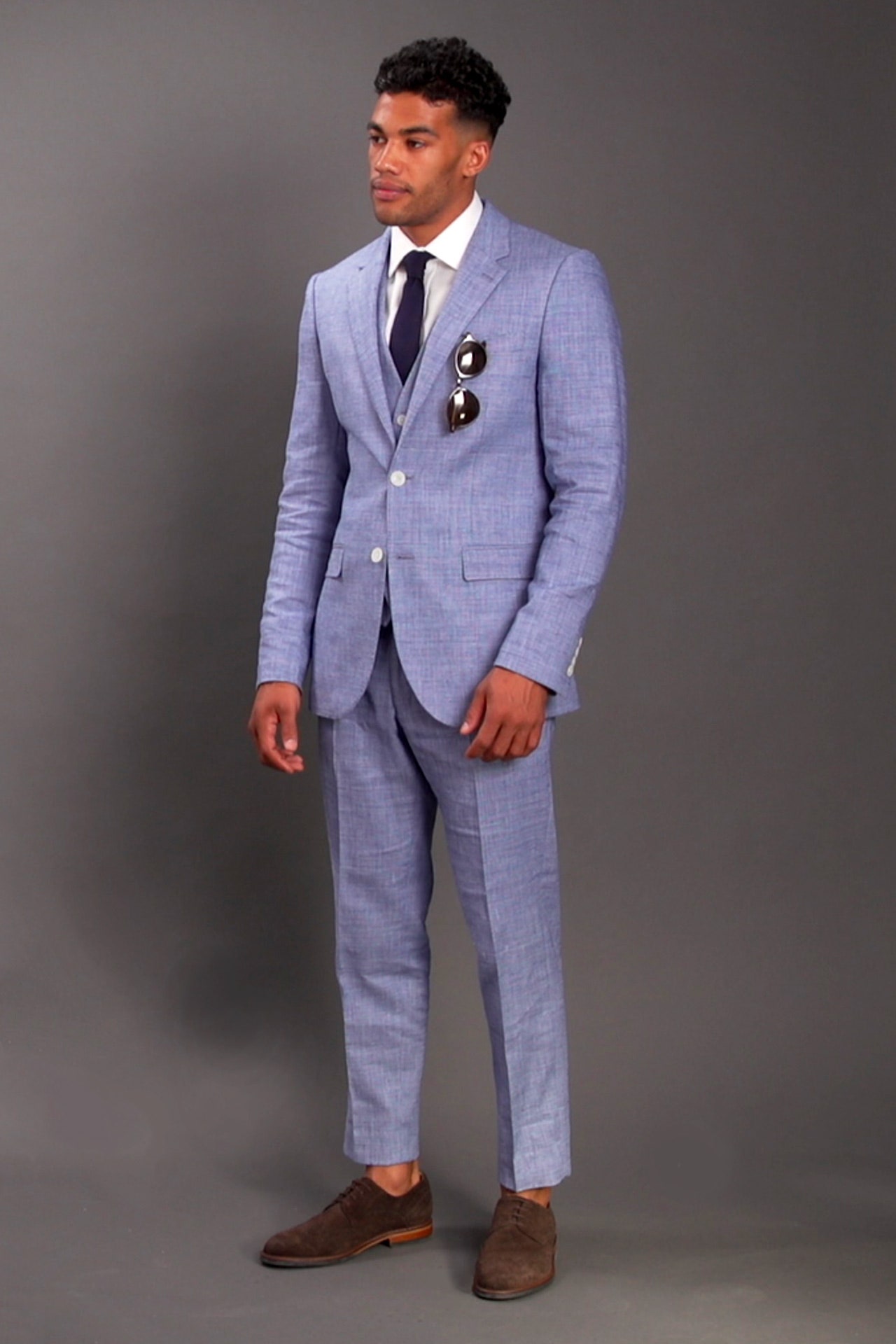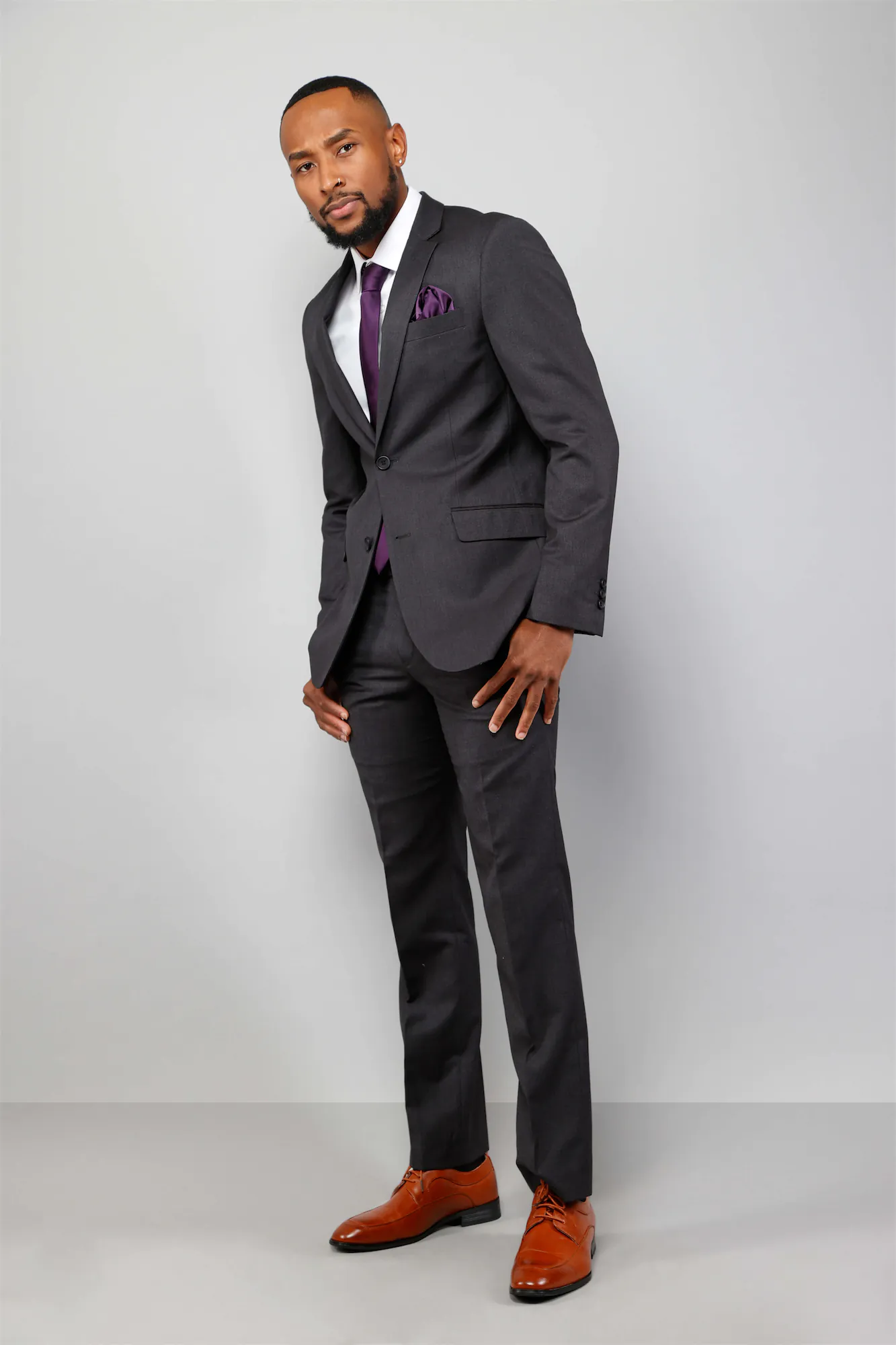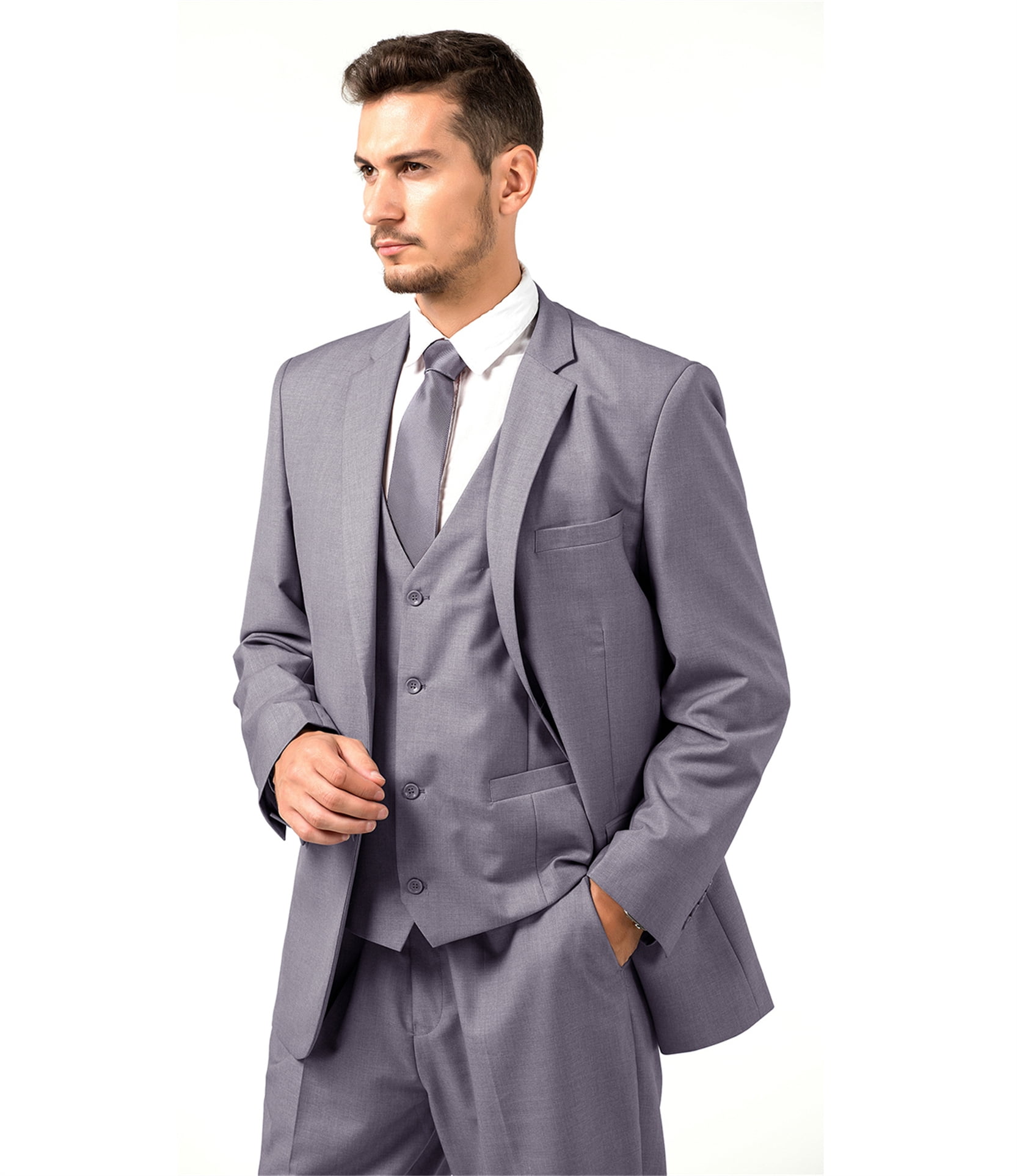What is suit? A suit is a classic and timeless ensemble that exudes elegance, professionalism, and style. Worn by individuals across various occasions, from formal events to business meetings, a well-fitted suit showcases sophistication and attention to detail. In this comprehensive guide, we will explore the various elements that define a suit, including its components, materials, styles, and occasions for wearing. By understanding the nuances of suits, you can confidently embrace this iconic ensemble and make a lasting impression. Let’s dive into the world of suits and uncover the secrets to their timeless appeal.

Components of a Suit:
A suit consists of several key components that work together to create a cohesive and refined look. These components include:
- Jacket: The jacket, also known as the coat or blazer, is the outermost component of a suit. It typically features a fitted silhouette, lapels, front buttons, and pockets.
- Trousers: The trousers are the lower part of the suit tailored and are designed to complement the jacket. They often have a matching fabric and color, a tailored fit, and a flat front or pleats.
- Waistcoat (optional): The waistcoat, commonly known as a vest, is an optional component that adds an extra layer of sophistication to a suit. It is worn underneath the jacket and typically features buttons and pockets.
Suit Materials:
Suits are available in a variety of materials, each offering unique characteristics and aesthetics. Common suit materials include:
- Wool: Wool is a popular choice for suits due to its versatility, durability, and natural ability to regulate body temperature. It is available in different weights and weaves, such as worsted wool, flannel, or tweed.
- Cotton: Cotton suits are lightweight, breathable, and comfortable, making them suitable for warmer climates or less formal occasions. Cotton is available in various weaves, including twill, poplin, or seersucker.
- Linen: Linen suits are characterized by their lightweight and breathable nature, making them ideal for hot, tropical climates. However, linen tends to wrinkle easily, adding a more casual and relaxed aesthetic to a suit.

Suit Styles:
Different suit styles cater to individuals’ preferences, body types, and occasions. Common suit styles include:
- Single-Breasted: Single-breasted suits have a front closure with a single row of buttons, creating a clean and streamlined look. They are versatile and appropriate for various occasions.
- Double-Breasted: Double-breasted suits feature a front closure with overlapping flaps and two parallel rows of buttons. This style offers a more formal and elegant appearance.
- Slim Fit: Slim fit suits are tailored to follow the contours of the body closely, creating a sleek and modern silhouette. These suits are popular among younger generations and those looking for a more fitted aesthetic.
- Classic Fit: Classic fit men suits vests have a more relaxed and traditional silhouette, providing comfort and a timeless appeal. They are ideal for individuals seeking a more conservative and versatile option.
Occasions for Wearing Suits:
Suits are appropriate for a wide range of formal and semi-formal occasions. Common occasions for wearing suits include:
- Business Events: Suits are a staple in the business world, suitable for meetings, presentations, and professional networking events. They exude professionalism and command respect.
- Weddings: Suits are a popular attire choice for grooms, groomsmen, and wedding guests. The color and style of the suit should complement the overall wedding theme and formality.
- Formal Events: Suits are a go-to option for black-tie events, galas, or awards ceremonies. In these situations, a classic black or midnight blue tuxedo suit is recommended.
- Social Gatherings: Suits can be appropriate for upscale social gatherings, such as cocktail parties, charity events, or upscale dinners. The formality level may vary depending on the event.

How to clean suit
Suits are investment pieces that require proper care and cleaning to maintain their timeless appeal and longevity. Regular wear and exposure to stains, dirt, or odors can diminish the suit’s appearance and overall quality.
Spot Cleaning:
Spot cleaning is recommended for small stains and spills that occur on your short suits. Follow these steps for effective spot cleaning:
- Act quickly: Attend to stains as soon as they occur to prevent them from setting into the fabric. The faster you address the stain, the better chance you have of successfully removing it.
- Blotting technique: Gently blot the stain with a clean and absorbent cloth or paper towel. Avoid rubbing the stain, as it can spread it further into the fabric.
- Stain removal solutions: Use appropriate stain removal solutions based on the type of stain. For example, water-based stains can be treated with water or mild soapy water, while oil-based stains may require a gentle solvent-based stain remover.
Dry Cleaning:
Professional dry cleaning is the recommended method for overall cleaning and maintenance of suits. Follow these guidelines for successful dry cleaning:
- Choose a reputable dry cleaner: Select a reliable and experienced dry cleaner who specializes in handling and cleaning suits. Ensure they have a good reputation and positive customer reviews.
- Inform the cleaner: Clearly communicate any stains or specific areas of concern to the dry cleaner. This will help them treat those areas with the appropriate cleaning techniques.
- Frequency of dry cleaning: Dry clean your suits only when necessary. Excessive dry cleaning can lead to fabric deterioration. Generally, it is recommended to dry clean a suit after several wears or when it shows visible signs of dirt or odor.

Professional Pressing:
Professional pressing helps restore the crisp, wrinkle-free appearance of suits after dry cleaning. Consider these points for pressing your suits:
- Choose a professional presser: Select a skilled professional who specializes in pressing suits. They should have knowledge of different suit fabrics and the appropriate pressing techniques.
- Discuss preferences: Inform the presser about your preferences regarding the suit’s fit and creases. This will help them tailor the pressing to your desired style.
- Avoid excessive heat: To prevent damage to the fabric, ensure the presser uses appropriate temperature settings and steam to safely remove wrinkles and create a polished finish.
Conclusion:
Suits are an epitome of style, elegance, and professionalism. Composed of a jacket, trousers, and an optional waistcoat, suits offer a cohesive and refined ensemble suitable for various occasions. Whether made from wool, cotton, linen, or synthetic blends, the choice of material affects the suit’s comfort, versatility, and aesthetic appeal. Different suit styles, such as single-breasted, double-breasted, slim fit, or classic fit, cater to individual preferences and body types. Suits excel in business events, weddings, formal gatherings, and social occasions, where they exude professionalism, sophistication, and a touch of personal style. Embrace the versatility and timelessness of suits and confidently wear them, knowing that you’ve embraced a wardrobe staple that will always make a statement.

